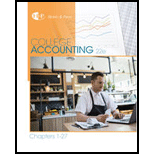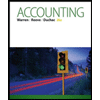
Concept explainers
Prepare the dividend allocation between preferred and common shares in total and per share.
Explanation of Solution
Common stock: These are the ordinary shares that a corporation issues to the investors in order to raise funds. In return, the investors receive a share of profit from the profits earned by the corporation in the form of dividend.
Preferred stock provides certain preferences or rights to its owners while compared to common stock. Generally, preferred stock holders are given the right to receive dividends and distribution of assets during the process of liquidation.
Cumulative Preferred Stock:
This feature implies that a preferred stockholder is entitled to receive dividends for the current year plus any unpaid dividends of the previous years, before the dividends are paid to the common stockholders.
Non-Cumulative Preferred Stock:
A non-cumulative preferred stock implies that a preferred stockholder is entitled to receive dividends for the current year alone; any unpaid dividends will never be paid.
The dividend allocation between preferred and common shares in total and per share is prepared as follows:
Situation 1:
| Particulars | Amount |
| Total amount available for dividends | $50,000 |
| Less: Dividends to preferred stock (1) | $18,000 |
| Amount available for common stock | $32,000 |
| Dividends per share: | |
| Preferred stock | $2.00 |
| Common stock (2) | $0.32 |
Table (1)
Working note:
(1) Calculate the dividends available for preferred stock in total:
(2) Calculate the dividend per share of common stock:
The dividend allocation between preferred and common shares in total and per share is prepared as follows:
Situation 2:
| Particulars | Amount | Amount | Amount |
| Total amount available for dividends | $56,000 | ||
| Dividends to Cumulative preferred stock: | |||
| From prior year (4) | $8,000 | ||
| Current year (5) | $8,000 | ||
| Total cumulative preferred stock dividends (3) | $16,000 | ||
| Dividends to Non-Cumulative preferred stock: | |||
| Current year (6) | $10,000 | ||
| Total preferred stock dividends | $26,000 | ||
| Amount available for common stock | $30,000 | ||
| Dividends per share: | |||
| Preferred cumulative (7) | $4 | ||
| Preferred noncumulative (8) | $2 | ||
| Common stock (9) | $0.75 |
Table (2)
Working note:
(3) Calculate the dividends available for cumulative preferred stock in total:
(4) Calculate the dividends to cumulative preferred stock from prior year:
(5) Calculate the dividends to cumulative preferred stock for current year:
(6) Calculate the dividends available for non-cumulative preferred stock in total for current year:
(7) Calculate the dividend per share of cumulative preferred stock:
(8) Calculate the dividend per share of non-cumulative preferred stock:
(9) Calculate the dividend per share of common stock:
Want to see more full solutions like this?
Chapter 20 Solutions
College Accounting, Chapters 1-27
 Cornerstones of Financial AccountingAccountingISBN:9781337690881Author:Jay Rich, Jeff JonesPublisher:Cengage Learning
Cornerstones of Financial AccountingAccountingISBN:9781337690881Author:Jay Rich, Jeff JonesPublisher:Cengage Learning College Accounting, Chapters 1-27AccountingISBN:9781337794756Author:HEINTZ, James A.Publisher:Cengage Learning,
College Accounting, Chapters 1-27AccountingISBN:9781337794756Author:HEINTZ, James A.Publisher:Cengage Learning, Financial Accounting: The Impact on Decision Make...AccountingISBN:9781305654174Author:Gary A. Porter, Curtis L. NortonPublisher:Cengage Learning
Financial Accounting: The Impact on Decision Make...AccountingISBN:9781305654174Author:Gary A. Porter, Curtis L. NortonPublisher:Cengage Learning Accounting (Text Only)AccountingISBN:9781285743615Author:Carl Warren, James M. Reeve, Jonathan DuchacPublisher:Cengage Learning
Accounting (Text Only)AccountingISBN:9781285743615Author:Carl Warren, James M. Reeve, Jonathan DuchacPublisher:Cengage Learning Intermediate Accounting: Reporting And AnalysisAccountingISBN:9781337788281Author:James M. Wahlen, Jefferson P. Jones, Donald PagachPublisher:Cengage LearningPrinciples of Accounting Volume 1AccountingISBN:9781947172685Author:OpenStaxPublisher:OpenStax College
Intermediate Accounting: Reporting And AnalysisAccountingISBN:9781337788281Author:James M. Wahlen, Jefferson P. Jones, Donald PagachPublisher:Cengage LearningPrinciples of Accounting Volume 1AccountingISBN:9781947172685Author:OpenStaxPublisher:OpenStax College





